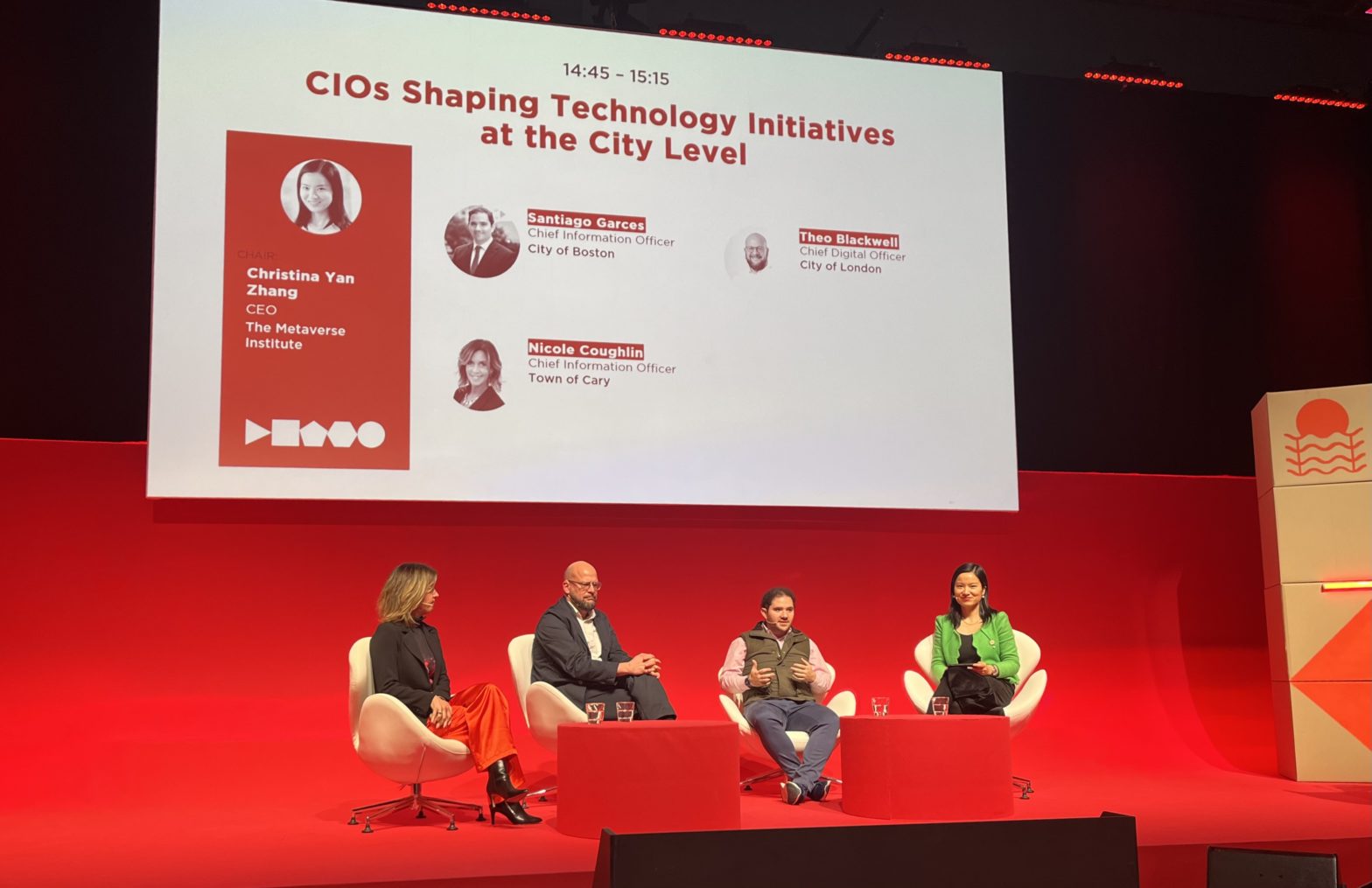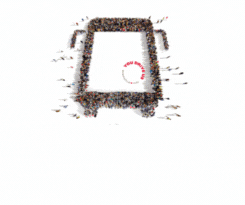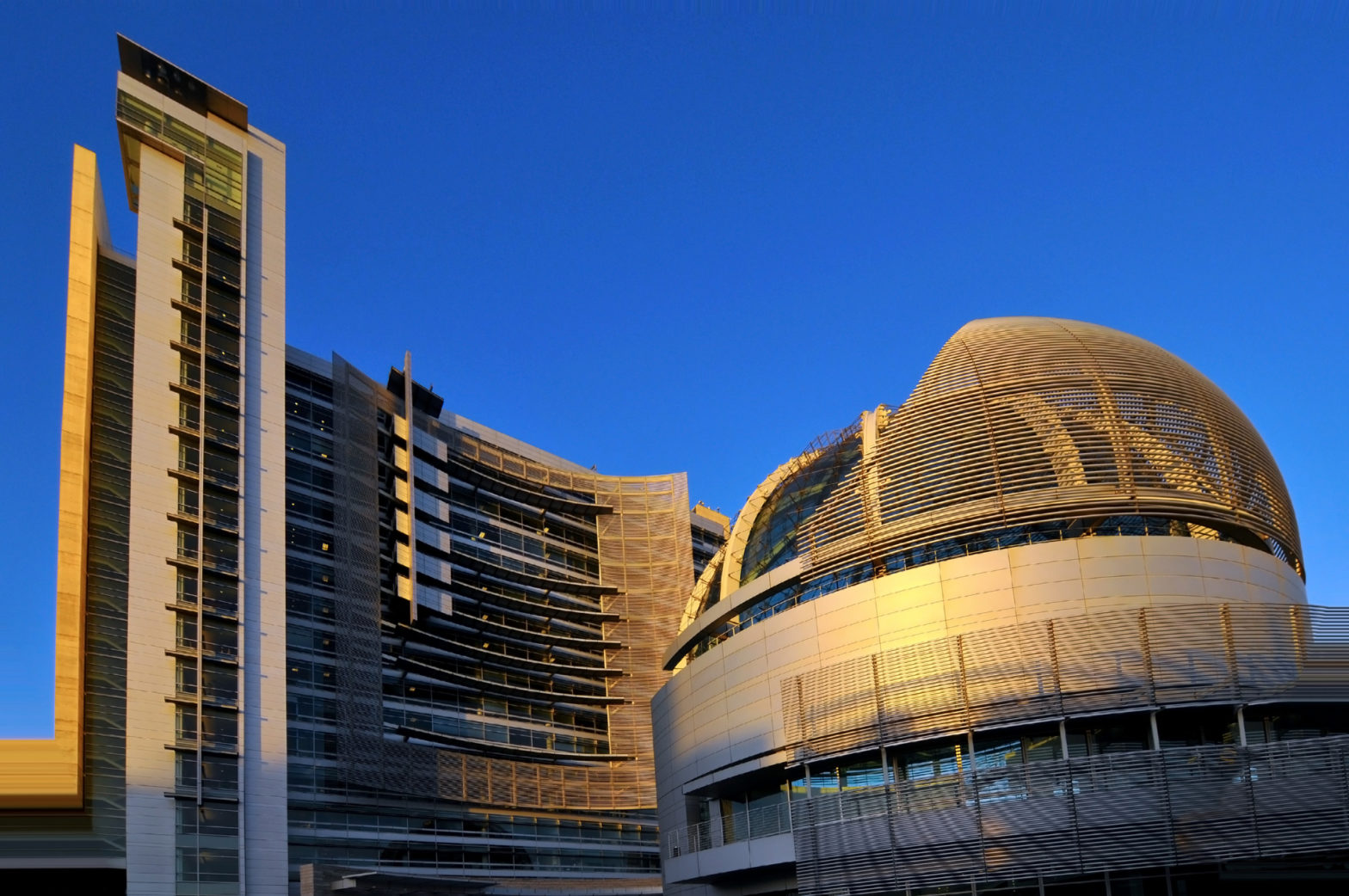
Photo: Cities Today
City CIOs fear generative AI’s impact on creative work
14 November 2023
by Sarah Wray
At Smart City Expo World Congress in Barcelona last week, city digitalisation leaders said there are good use cases for generative artificial intelligence (AI), but they raised concerns about issues such as the impact on creative industries and critical thinking.
Theo Blackwell, London’s Chief Digital Officer, said local governments are trialling generative AI for tasks such as responding to resident queries quickly and translation. The London Office of Technology and Innovation (LOTI) has created guidelines for the use of generative AI by councils.
Blackwell said that while he believes generative AI will be “tremendously useful for city government”, a pressing issue today is the wider economic impact on key industries.
One in five jobs in the UK capital is in the creative sector.
“They are very, very concerned about how generative AI, particularly in the image space, potentially undermines copyright and people’s living,” Blackwell commented.
“So our first action – apart from creating guidelines – was to look at the impacts on the economy and society and make representations to government to that effect.”
He said the dialogue around images and issues such as copyright and intellectual property could shape wider discussions about generative AI.
Blackwell also highlighted that the ability for imagery to be manipulated could undermine trust in society. Just days later, reports emerged that a video featuring deepfake audio of London Mayor Sadiq Khan had been shared on social media.
Responsibility
Santiago Garces, Chief Information Officer for the City of Boston, shared Blackwell’s concerns about the creative economy.
“There’s a real responsibility that we have as stewards of public goods and thinking about the impact that these technologies will have on creative people in our cities,” he said. “We love cities because they’re human, they have heart, they have musicians, they have poets, they have writers.”
Boston launched generative AI guidelines for staff in May and was one of the first cities to do so. The guidance covers issues such as confidentiality, fact-checking and responsibility.
Garces commented: “There are a lot of questions beyond just legality and ownership about the ethics of how we use [generative AI]. As we start thinking about the next generation of these guidelines, there’s a very important need to listen to some of these creative people and think about the entire lifecycle of these things.”
He said this includes acting as responsible buyers of AI products.
On some areas of potential for generative AI, Garces said the tools could help to make regulations more understandable and transparent and enable non-technical people to analyse open data.
Critical thinking
Nicole Coughlin, Chief Information Officer for the Town of Cary, said that as well as sharing her fellow panellists’ concerns about the potential impact of generative AI on artists and creatives, she also doesn’t want the tools to dull people’s analytical capabilities.
“I fear for the lack of critical thinking that it takes away, and that’s a skill that we need across the board,” Coughlin commented.
Cary has introduced generative AI guidelines but Coughlin stressed the importance of training on how to use the tools with critical thinking and validate the results.
She said she didn’t want generative AI to create a “lazy culture where we throw everything into ChatGPT and hope it comes out for the best because there’s a lot that can go wrong.”
Garces said we are “just at the beginning of understanding” generative AI.
Academics such as Ethan Mollick have referred to the “jagged frontier” of AI to describe uneven and fast-changing capabilities.
“I think that there’s a lot of possibility, a lot of opportunity, and also a lot of risk,” said Garces. “And I think that being transparent, being responsible, but also experimenting and getting our hands on these tools can be quite helpful in navigating the jagged line.”








